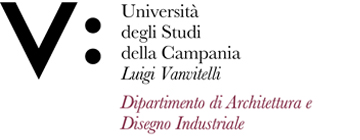Chiara INGROSSO
Insegnamento di STORIA DEL DESIGN E DELL'ARCHITETTURA 2
Corso di laurea in DESIGN E COMUNICAZIONE
SSD: ICAR/18
CFU: 6,00
ORE PER UNITÀ DIDATTICA: 48,00
Periodo di Erogazione: Primo Quadrimestre
Italiano
| Lingua di insegnamento | ITALIANO |
| Contenuti | Il corso si concentra sulla storia dell'architettura e del design contemporaneo dalla metà del XIX secolo ad oggi. Le architetture e i prodotti di design saranno studiati in riferimento al contesto storico, economico e sociale, al dibattito teorico. |
| Testi di riferimento | I testi di riferimento sono: |
| Obiettivi formativi | L'insegnamento intende fornire una conoscenza di base della storia del design e dell'architettura contemporanei in Italia e nel contesto internazionale e si prefigge di trasmettere la capacità di comprenderne le nozioni teoriche e storico-critiche a monte. |
| Prerequisiti | Agli studenti è richiesta una conoscenza di base della storia dell'architettura moderna. |
| Metodologie didattiche | Il corso si compone di lezioni frontali ed esercitazioni per un totale di 6 CFU pari a 48 ore di didattica. Agli studenti verrà chiesto di produrre individualmente un book di disegni in forma di schizzo con brevi testi che rielaborano criticamente le opere affrontate durante il corso. |
| Metodi di valutazione | Il metodo di verifica è orale e verterà sul programma affrontato, ma verranno presi in considerazione anche gli esiti dell’esercitazione inter-corso. In particolare, è prevista un’esercitazione da svolgersi individualmente. Agli studenti, compresi gli studenti Erasmus, verrà chiesto di elaborare un book di schizzi e testi a partire dalle opere affrontate durante il corso. A questa esercitazione verrà assegnato un voto che farà media con il colloquio d’esame finale. |
| Altre informazioni | Sono previsti materiali di supporto on line. Verranno fornite le slides utilizzate durante le lezioni. Sono previste attività di tutorato. |
| Programma del corso | Il programma per esteso è il seguente: |
English
| Teaching language | Italian |
| Contents | The course focuses on the history of contemporary architecture and design from the mid-19th century to the present. Architectures and design products will be studied with reference to historical, economic and social context, theoretical debate. |
| Textbook and course materials | The reference texts are: |
| Course objectives | The course intends to provide a specialized knowledge of contemporary Italian and international design and architecture and aims to convey the ability to understand the theoretical and historical-critical notions upstream. |
| Prerequisites | Students are required to have a basic knowledge of modern and contemporary architectural history. |
| Teaching methods | The course consists of lectures and tutorials for a total of 6 CFUs equal to 48 hours of didactics. Students will be asked to individually produce a sketchbook of drawings in sketch form with short texts critically reworking the works covered in the course. |
| Evaluation methods | The testing method is oral and will focus on the program covered, but the outcomes of the inter-course exercise will also be taken into consideration. In particular, an exercise is planned to be taken individually. Students, including Erasmus students, will be asked to develop a book of sketches and texts from the works covered in the course. This exercise will be assigned a grade that will be averaged with the final exam interview. |
| Other information | Online support materials are provided. Slides used during lectures will be provided. Tutoring activities are planned. |
| Course Syllabus | The program in full is as follows: |








